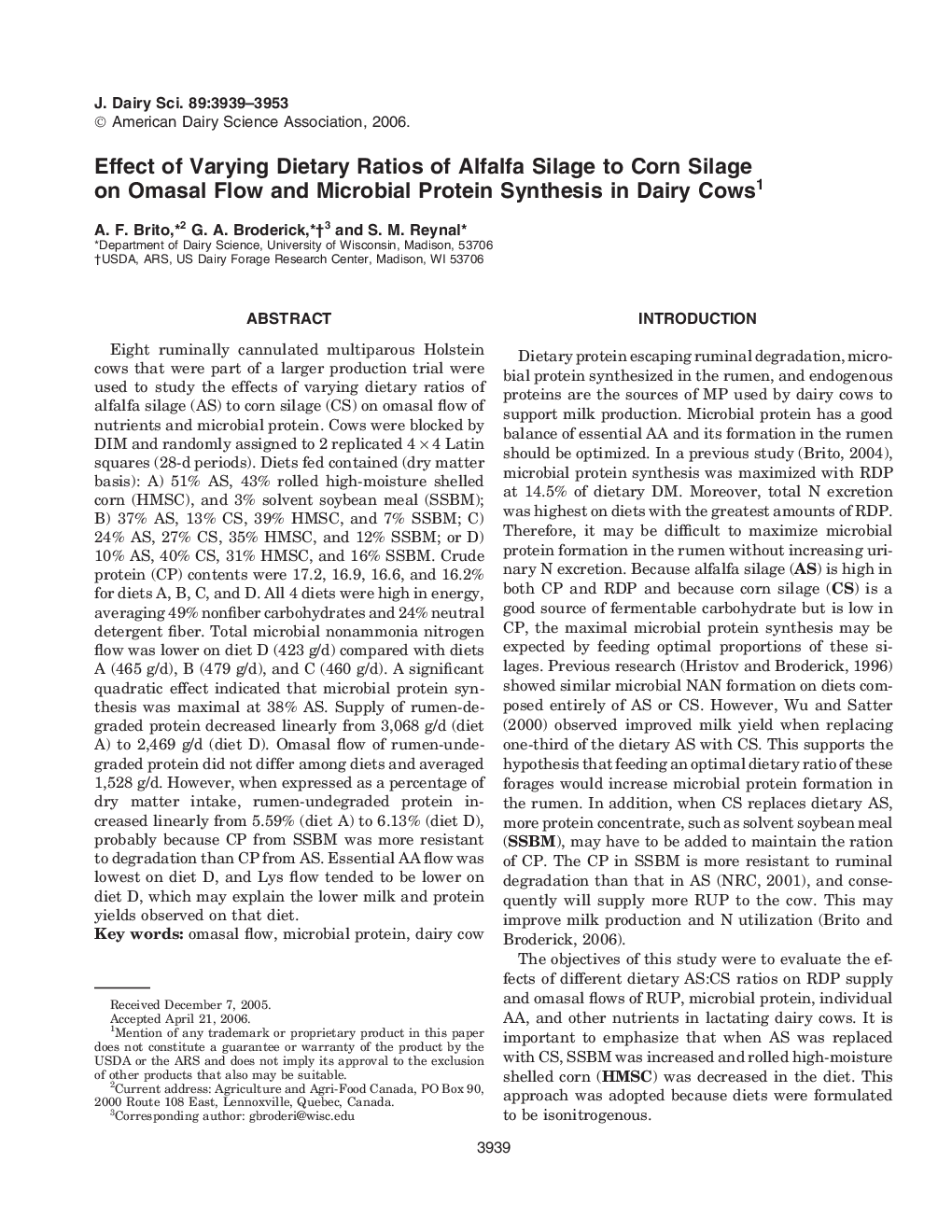| Article ID | Journal | Published Year | Pages | File Type |
|---|---|---|---|---|
| 2440963 | Journal of Dairy Science | 2006 | 15 Pages |
Abstract
Eight ruminally cannulated multiparous Holstein cows that were part of a larger production trial were used to study the effects of varying dietary ratios of alfalfa silage (AS) to corn silage (CS) on omasal flow of nutrients and microbial protein. Cows were blocked by DIM and randomly assigned to 2 replicated 4Â ÃÂ 4 Latin squares (28-d periods). Diets fed contained (dry matter basis): A) 51% AS, 43% rolled high-moisture shelled corn (HMSC), and 3% solvent soybean meal (SSBM); B) 37% AS, 13% CS, 39% HMSC, and 7% SSBM; C) 24% AS, 27% CS, 35% HMSC, and 12% SSBM; or D) 10% AS, 40% CS, 31% HMSC, and 16% SSBM. Crude protein (CP) contents were 17.2, 16.9, 16.6, and 16.2% for diets A, B, C, and D. All 4 diets were high in energy, averaging 49% nonfiber carbohydrates and 24% neutral detergent fiber. Total microbial nonammonia nitrogen flow was lower on diet D (423 g/d) compared with diets A (465 g/d), B (479 g/d), and C (460 g/d). A significant quadratic effect indicated that microbial protein synthesis was maximal at 38% AS. Supply of rumen-degraded protein decreased linearly from 3,068 g/d (diet A) to 2,469 g/d (diet D). Omasal flow of rumen-undegraded protein did not differ among diets and averaged 1,528 g/d. However, when expressed as a percentage of dry matter intake, rumen-undegraded protein increased linearly from 5.59% (diet A) to 6.13% (diet D), probably because CP from SSBM was more resistant to degradation than CP from AS. Essential AA flow was lowest on diet D, and Lys flow tended to be lower on diet D, which may explain the lower milk and protein yields observed on that diet.
Related Topics
Life Sciences
Agricultural and Biological Sciences
Animal Science and Zoology
Authors
A.F. Brito, G.A. Broderick, S.M. Reynal,
